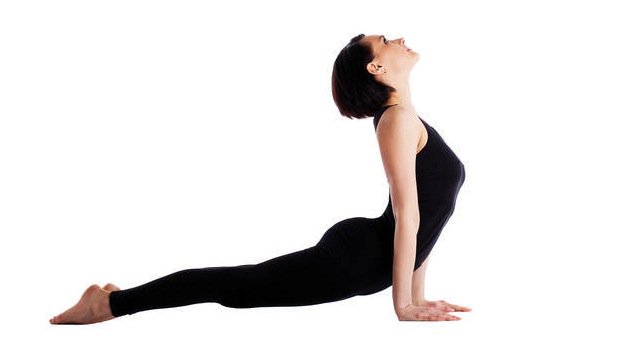If you want to learn and do yoga but have recently suffered an injury and are undergoing (or have undergone) physical therapy, Iyengar is definitely one of the types of yoga you should consider taking up. The Iyengar style of yogic practice is known for its use of props and accessories like yoga blocks, blankets, towels, and bands, to make the poses not only easier or safer to do, but also to ensure the body's proper alignment is maintained all throughout. More than any other variation of yoga, Iyengar Yoga zones in on proper alignment to perform the poses or asanas in the best possible way, without incurring any risks of injury.
So how different is the version of Iyengar Yoga poses from the other styles of yoga? Here are some examples to give you a clearer idea.
Seated Forward Bend (Paschimottanasana)
Instead of the regular way of doing this pose with nothing but a mat underneath you, the Iyengar variation of the Seated Forward Bend is done with the help of bolsters or stacked towels. While you're seated with your back straight and legs stretched out in front of you, place the bolsters on top of your knees. So when you hinge your body forward, your arms and elbows will be resting on the bolsters, with the tips of your fingers reaching your toes.
Cobra Pose (Bhujangasana)
As mentioned, almost all Iyengar yoga poses use props and accessories. In Cobra pose, the accessories you'll need are yoga blocks, which will help you get additional height. Placing your hands on blocks instead of on the mat while doing the Cobra pose also helps you get a deeper stretch on your back.
Lotus Pose (Padmasana)
The Lotus pose requires the student to sit cross-legged on the mat with the legs touching the ground. But like with other Iyengar Yoga poses, you can use blocks or bolsters to help you do the pose properly without straining the inner thigh muscles or the knees. Remember, knees don't stretch, they tear, so it's very important to protect them. While sitting cross-legged, simply place the bolsters between your knees and the floor. This way, you still get that stretch in your legs, and your knees are resting on a surface, without any muscle discomfort.
Supported Bridge Pose (Setu Bandha Sarvangasana)
From a lying down position, you can do the Supported Bridge Pose Iyengar-style by bending your knees and placing a yoga block right underneath your hip. Remember to keep your shoulders and feet flat on the mat, and your knees and legs at a 90-degree angle. As in other Iyengar Yoga poses, the use of yoga block in this pose lessens the possibility of experiencing strain and discomfort in the leg and hip muscles, as well as the glutes.
Child's Pose (Balasana)
This is one of the Iyengar Yoga poses where you will need at least two yoga blankets (or towels) and two bolsters. To do the Iyengar version of the Child's pose, roll up one blanket and place it between your buttocks and the soles of your feet. Stack the two bolsters on top of each other and place them on the mat, right between your folded legs. Place the other blanket on top of the bolsters where your chest would fall as you bend your body forward and stretch your arms out in front of you, palms touching the floor.
These are just some examples of how Iyengar Yoga makes use of props in performing different poses. As you gain more flexibility and muscle strength, you can try to gradually limit your use of props and perform the traditional ways of doing the asanas. All yoga practitioners at any level of skill should always give Iyengar a try to improve alignment and placement.


